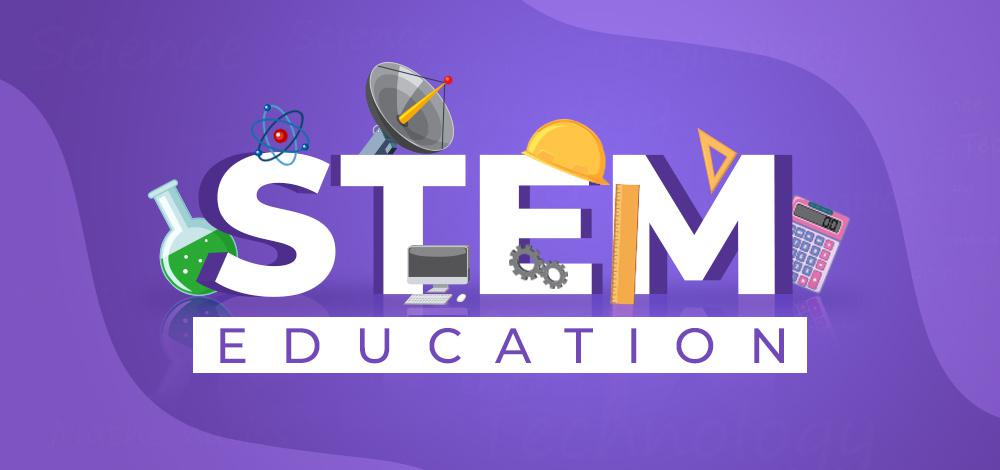What is STEM Education and How is it Implemented?
STEM education combines learning in the fields of science, technology, engineering, and mathematics with art, making the learning process more enjoyable for students. This education provides an opportunity for students to develop thinking, problem-solving, and creativity skills. STEM is vital to helping students succeed in the future job market. This program can be acquired through colleges and courses.
Careers in the STEM field are increasing, and students educated in this field have the potential to lead in advanced technology and other innovations. This education can provide students with an interdisciplinary perspective, helping them find innovative solutions to global issues.
What is STEM Education?
STEM education is a term formed by combining the initials of the words “Science”, “Technology”, “Engineering”, and “Mathematics”. In other words, STEM is the acquisition of education in science, technology, engineering, and mathematics problem-solving abilities.
This term signifies an approach that encompasses these four disciplines and provides education in these areas. STEM aims to impart knowledge and skills in these areas to students, and develop important skills such as problem-solving, critical thinking, and creativity.
Being a school with this education is valuable because it is quite important in today’s rapidly evolving technological world. This educational approach aims to provide students with a qualified workforce capable of meeting the demands of the business world. The function of education as STEM is to provide students with skills that will help them solve the life problems they will encounter in the future.
How is STEM Education Acquired?
STEM education is an approach that aims to impart fundamental knowledge and skills in science, technology, engineering, and mathematics to students. STEM is a learning model supported by both in-class and out-of-class activities, starting from the pre-school period.
The steps below serve as a guide to how the STEM program system is implemented:
Planning: STEM should be supported by engaging and interactive activities that encourage student participation. Therefore, teachers should first plan activities suitable for students’ ages, interests, and learning styles.
Teacher Preparation: STEM requires active participation from students. Therefore, teachers need to be prepared to guide students in the learning process, while also being ready to answer students’ questions, guide students, and provide support.
Student Participation: Active student participation is important in the system involved in STEM education. Students should produce projects, conduct research, and perform experiments. This helps develop students’ critical thinking and problem-solving skills.
Collaboration: STEM encourages students to collaborate. By sharing different talents and knowledge, students achieve more successful results working together.
Technology Use: STEM requires the use of technology. Students develop projects, conduct research, and prepare presentations using technology.
STEM education helps develop students’ creativity, critical thinking, and problem-solving skills. This educational approach assists students in acquiring the fundamental knowledge and skills necessary for their future careers.
Who Can Receive STEM Education?
STEM is generally an educational approach offered at primary, secondary, and higher education levels. Therefore, STEM education can be taken by students of all age groups and can start at an early age. Students can start learning basic knowledge and skills about STEM topics from primary school.
STEM is also beneficial for students interested in a specific discipline. For example, if a student wants to pursue a career in engineering, STEM classes are very important for them. STEM is beneficial for everyone interested in the fields of mathematics, science, technology, and engineering.
STEM not only benefits students but also teachers. Teachers can guide their students more effectively by gaining knowledge and skills about STEM topics. STEM education is also beneficial for adults who want to learn the essential basic knowledge and skills to help them progress in their careers.
What is STEM Education Focused On?
STEM focuses on subjects in science, technology, engineering, and mathematics. These disciplines are influential in many aspects of the modern world. STEM aims to impart basic knowledge and skills in these areas to students. It is an education model that will make students grasp and love science, technology, engineering, and mathematics fields.
This education teaches students skills such as practicality, critical thinking, problem-solving, analyzing, and interpreting data. The education program includes many creative activities related to technology.
It enables students to familiarize themselves with technology and use technological tools efficiently. STEM education also encourages students to focus on the societal benefits of science and technology and prepares them for future job opportunities. If programs like these interest you, the IB Diploma Program might also be of interest.
Why is There a Need for STEM Education?
STEM is an educational model that includes subjects in science, technology, engineering, and mathematics.
There are many reasons why a STEM program is needed:
Global Competition: Competition between countries worldwide is increasing. Students proficient in STEM fields can design advanced technology products, make new discoveries, and provide innovation. This is important in terms of competition between countries.
Employment: Those proficient in STEM subjects are among the sought-after qualities in the business world. STEM provides students with more opportunities in the job market.
Technology Use: With the development of technology, individuals who undergo the STEM program can use technology more effectively. This provides a practical advantage in daily life.
Social Benefit: STEM focuses on the social benefits of science and technology. Students can find solutions to societal problems by receiving this education.
Innovation: Innovation is the design of new products and systems using advanced technology. Innovation is needed in today’s world, and STEM provides this knowledge and skills.
In conclusion, STEM is a necessity in today’s world. By receiving this education, students can provide more contributions to their country and society. With STEM, students can have a brighter future.






